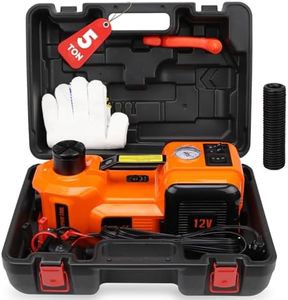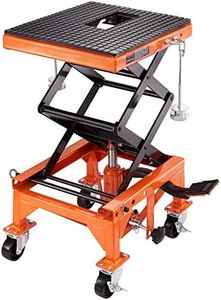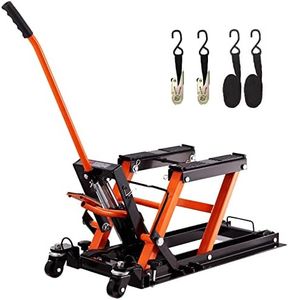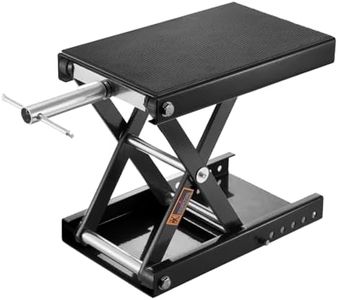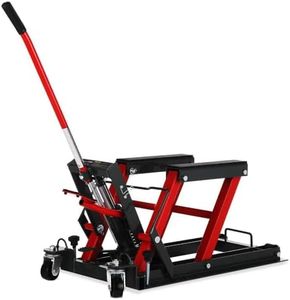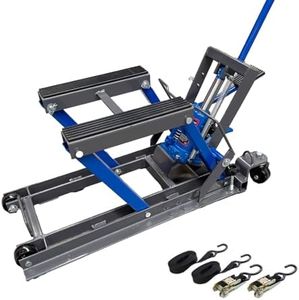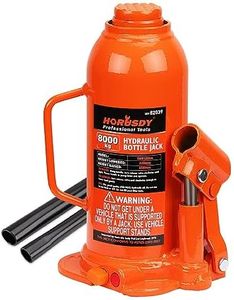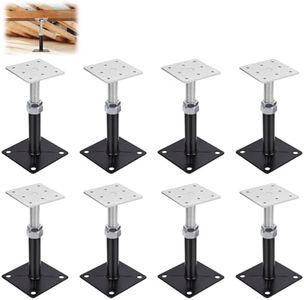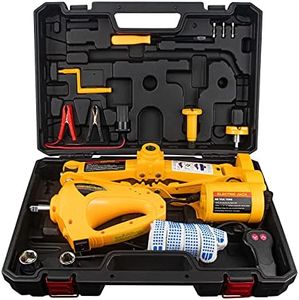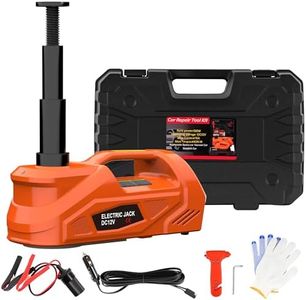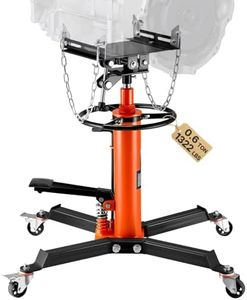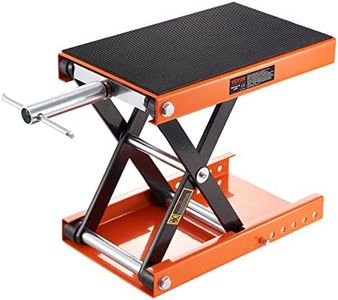We Use CookiesWe use cookies to enhance the security, performance,
functionality and for analytical and promotional activities. By continuing to browse this site you
are agreeing to our privacy policy
10 Best Lift Jacks
From leading brands and best sellers available on the web.Buying Guide for the Best Lift Jacks
When you're looking to buy a lift jack, the key is to understand the kind of lifting tasks you'll be tackling. Lift jacks come in various forms, and choosing the right one can make tasks like changing tires, working underneath a vehicle, or lifting heavy equipment much easier and safer. It’s important to consider what you’ll mostly be using the jack for, the environment you’ll be working in, and the types of vehicles or objects you’ll need to lift. The right combination of strength, height, and portability ensures you can work safely and efficiently.Lifting Capacity (Rated Load)Lifting capacity refers to how much weight your jack can safely lift, usually measured in tons or kilograms. This is a critical feature because using an underpowered jack can be dangerous; overloading can lead to equipment failure or accidents. For light cars, a jack with a lower capacity is usually sufficient, but for larger vehicles (like SUVs or trucks) or heavy equipment, you'll need something sturdier. To choose correctly, find out the weight of your heaviest vehicle or item to be lifted, and select a jack whose capacity exceeds this for an extra margin of safety.
Lifting Range (Minimum and Maximum Height)The lifting range tells you how low the jack can go to fit under your vehicle and how high it can lift. A low minimum height is important for cars with little ground clearance, while a high maximum lift is needed if you want more space under the vehicle. To pick the right one, check your vehicle's ground clearance and estimate how much extra space you'll need for the task. If you mostly work on sportscars, a lower minimum is key; for taller vehicles, pay attention to how high the jack can go.
Type of Jack (Bottle, Floor, Scissor, Hi-Lift, etc.)There are several styles of jacks and each serves a different purpose. Scissor jacks are compact and suitable for emergencies, floor jacks are easy to maneuver and ideal in garages, bottle jacks are strong and work well for heavier vehicles with higher clearance, and hi-lift jacks are designed for off-road vehicles. Think about where and how you'll use the jack most often: choose a lightweight, portable type for roadside fixes, a stable and easy-rolling one for garage work, or a heavy-duty style for tall trucks or off-roading.
Material and Build QualityThe materials used in the jack’s construction affect both its strength and its weight. Steel jacks are sturdy and long-lasting but heavier, while aluminum models are lighter and easier to move but may not be as rugged. Build quality includes factors like welds, hardware, and finish; these impact how well the jack can withstand repeated use and the elements. Consider if you’ll need to carry your jack often or if it will mostly stay in your garage—this will help you decide between the durability of steel versus the portability of aluminum.
Safety FeaturesCommon safety features include safety valves to prevent overloading, locking mechanisms that keep the jack in place, and wide bases for stability. These are essential because lifting heavy objects can be risky. When comparing jacks, look for built-in features that match your safety concerns, especially if you'll be working solo or on uneven ground. Those who are new to using jacks should prioritize models with clear safety functions for peace of mind.
Portability and StorageConsider how easy it is to move and store your jack. Some are large and hard to move around, while others are compact or come with carrying cases. If you intend to keep a jack in your car for emergencies, choose a model that is easy to store in your trunk. For fixed garage use, size matters less, but maneuverability might still be important. Think about your workspace and how often you'll need to transport your jack when deciding which portability level fits you best.
